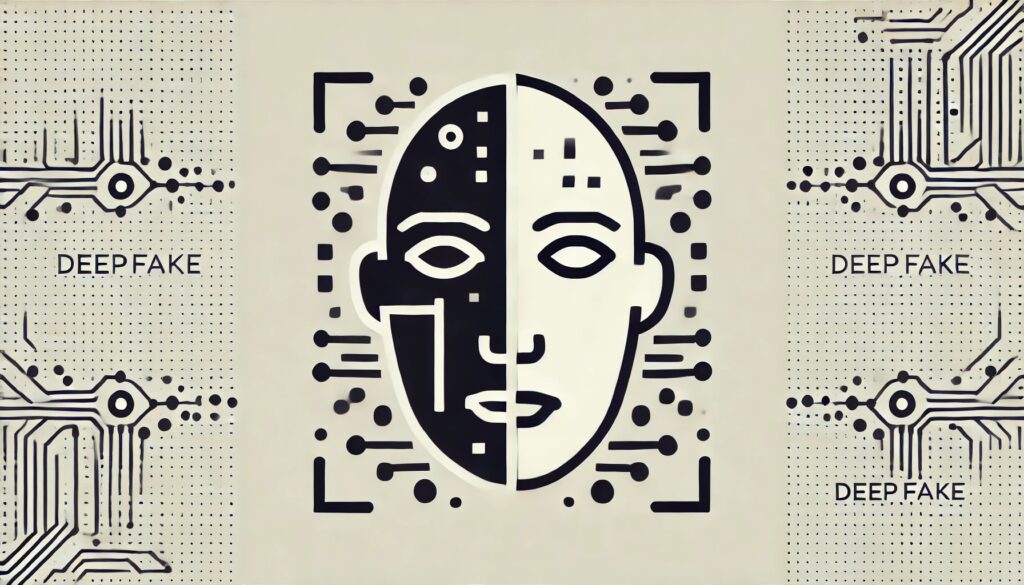
Fraudulent activities have become alarmingly sophisticated. Businesses and individuals need robust solutions to protect their data and financial assets. AI-powered fraud protection is revolutionizing how we tackle cybercrime.
Here’s how it works and why you should embrace it.
What Is AI-Powered Fraud Protection?
Defining Fraud Protection with AI
AI-powered fraud protection uses advanced algorithms to identify and prevent suspicious activities. Unlike traditional methods, it adapts to emerging threats in real-time.
By analyzing massive data sets, AI detects patterns humans might miss. It’s like having a cyber watchdog guarding your digital perimeter 24/7.
Key Technologies Behind the Innovation
AI fraud protection integrates machine learning (ML), natural language processing (NLP), and behavioral analytics. These technologies work together to assess anomalies and predict risks.
For instance, ML learns from past fraud attempts, while NLP scans text data for signs of scams. Behavioral analytics track user actions, flagging unusual behaviors instantly.
Why AI Is the Future of Security
Traditional systems rely on static rules, which fail against today’s dynamic threats. AI evolves as threats change, providing a proactive defense against data breaches and identity theft.
Common Fraud Tactics AI Helps Combat
Phishing and Social Engineering
Phishing scams trick users into revealing sensitive information. AI can detect suspicious links and fraudulent emails by analyzing their content and origins.
Social engineering exploits human psychology. AI-driven tools recognize manipulative tactics, alerting users before they fall victim.
Financial Fraud Detection
From credit card fraud to fake account creation, financial fraud is a growing concern. AI identifies unusual spending patterns and blocks transactions in real time.
For example, if your card is used in two countries within minutes, AI flags it as suspicious and halts the transaction.
Identity Theft Prevention
AI verifies user identities through advanced methods like biometric analysis and multi-factor authentication. It ensures only authorized individuals can access sensitive accounts.
Benefits of Adopting AI Fraud Solutions

24/7 Monitoring for Peace of Mind
AI doesn’t sleep. It continuously scans networks and transactions, offering round-the-clock protection. This ensures threats are addressed instantly, even outside business hours.
Reducing False Positives
Traditional systems often block legitimate activities, frustrating users. AI’s precision minimizes false positives, improving user experience without compromising security.
Cost Efficiency and Scalability
AI solutions save businesses money by reducing fraud losses and automating security processes. They’re also highly scalable, adapting to organizations of any size.
How AI Safeguards Your Personal Data
Advanced Encryption Protocols
AI enhances encryption methods, making data breaches nearly impossible. It ensures your information remains safe, even if intercepted by hackers.
Real-Time Alerts and Actions
AI-powered systems send instant notifications for suspicious activities. Some tools even freeze accounts automatically to prevent unauthorized access.
Building Trust in Digital Transactions
As cybercrime rises, users demand secure online experiences. AI fosters trust by ensuring data privacy and secure transactions, crucial for e-commerce and banking sectors.
Industries Benefiting from AI Fraud Protection
Banking and Financial Services
The financial sector faces relentless threats, from identity theft to fraudulent transactions. AI strengthens defenses by analyzing transaction data and customer behaviors in real time.
It identifies unusual patterns, such as high-value withdrawals or login attempts from unusual locations, and takes immediate action to protect accounts.
E-Commerce Platforms
Online retailers are prime targets for fraud. AI safeguards e-commerce by preventing fake accounts, chargeback fraud, and account takeovers.
By monitoring shopping behaviors and payment methods, AI detects anomalies, reducing risks for both businesses and customers.
Healthcare and Insurance
Fraud in healthcare and insurance can cost billions annually. AI-powered systems verify claims, ensuring they’re legitimate before processing payments.
Additionally, AI helps protect patient data from breaches, meeting strict regulatory requirements like HIPAA in the U.S.
Challenges in Implementing AI Fraud Solutions
Initial Costs and Integration
AI systems require significant investment upfront. Small businesses might hesitate due to cost concerns or difficulty integrating AI with existing systems.
However, the long-term savings in fraud losses and improved security often outweigh initial expenses.
Training AI for Accuracy
AI is only as good as its training. Poorly trained models can miss threats or generate too many false positives. Continuous updates and high-quality data are essential for optimal performance.
Balancing Privacy and Security
Using AI to monitor behaviors raises privacy concerns. Businesses must strike a balance, ensuring compliance with data protection laws like GDPR. Transparency in how AI is used builds trust.

Popular AI Tools and Solutions
Fraud Detection Platforms
Leading solutions like SAS Fraud Management and Feedzai use AI to monitor transactions and flag suspicious activities.
These platforms offer customizable settings, ensuring they align with your organization’s unique needs.
Biometric Verification Systems
Biometric systems, like facial recognition and voice authentication, are powered by AI. They prevent identity theft by ensuring only authorized users gain access.
Cloud-Based Security Services
Cloud-based AI services, such as AWS Fraud Detector, provide scalable solutions for businesses of all sizes. They integrate seamlessly with existing systems for hassle-free implementation.
How to Choose the Right AI Fraud Protection Solution
Assess Your Specific Needs
Different industries face unique challenges. E-commerce platforms need tools to combat payment fraud, while healthcare organizations prioritize data security.
Identify your business’s pain points and choose an AI solution tailored to address them effectively.
Look for Customizable Features
A one-size-fits-all approach doesn’t work for fraud prevention. Select systems that allow you to customize detection rules and thresholds based on your requirements.
For instance, retailers may need tools that prioritize transaction pattern analysis, while banks might require sophisticated identity verification processes.
Evaluate Ease of Integration
Switching to AI-powered tools should enhance your operations, not complicate them. Choose systems compatible with your current software to ensure a smooth transition.
Most modern AI solutions offer APIs for seamless integration, reducing downtime and learning curves.
Staying Ahead of Emerging Threats
The Role of Predictive Analytics
AI’s ability to predict future threats is a game-changer. Predictive analytics leverage past data to foresee and counteract new fraud techniques before they emerge.
For example, AI may recognize evolving phishing tactics and adjust defenses, keeping your data one step ahead of hackers.
Continuous Learning and Adaptation
Unlike traditional systems, AI evolves. Machine learning models update automatically as they encounter new scenarios, ensuring robust protection against ever-changing threats.
Regular Updates and Audits
No system is foolproof. Regular updates and security audits ensure your AI-powered solution remains effective and compliant with current regulations.
AI-Powered Fraud Protection for Real-Time Defense
Adaptive Threat Modeling
Traditional fraud systems work on static rules, but AI uses adaptive threat modeling. This technique dynamically adjusts detection algorithms based on emerging fraud patterns.
For example, if scammers devise a new phishing technique, AI models recognize anomalies in real time and block them before widespread damage occurs.
Tools Implementing Adaptive Threats
Platforms like Darktrace and Forter use advanced modeling to deliver self-learning fraud protection. These solutions specialize in continuously evolving based on new data.
Graph-Based Network Analysis
Fraud isn’t always individual—it often involves networks of bad actors. Graph-based AI maps relationships between accounts, transactions, and users to uncover fraudulent networks.
For example, by mapping interactions between suspicious email domains, payment methods, and IP addresses, graph-based analysis identifies fraud rings.
Example: Neo4j
Neo4j, a leader in graph technology, enables businesses to visualize fraud networks, making prevention far more targeted and efficient.

Behavioral Biometrics: Revolutionizing Identity Security
What Are Behavioral Biometrics?
Unlike traditional biometrics (fingerprints, facial recognition), behavioral biometrics analyze patterns in how users interact with devices.
Typing speed, screen pressure, and even mouse movements create a unique user signature. AI detects deviations, flagging potential fraud without interrupting legitimate users.
Key Applications in Fraud Detection
- Account Takeover Protection: Behavioral biometrics identify unauthorized access attempts, even with stolen credentials.
- Payment Authentication: Verify users during e-commerce transactions without intrusive second-factor authentication.
Leaders in Behavioral Biometrics
Solutions like BioCatch and TypingDNA offer cutting-edge behavioral AI tools, enhancing both security and user experience.
AI-Driven Data Tokenization
Enhancing Data Privacy
Data tokenization replaces sensitive information, such as credit card numbers, with non-sensitive tokens. AI enhances this by identifying which data to tokenize, balancing security and functionality.
For instance, in a payment system, AI can tokenize payment details while leaving order data accessible, ensuring compliance without hindering operations.
Tokenization in Real-Time Fraud Prevention
AI integrates tokenization with fraud monitoring tools, creating a seamless pipeline where user data remains inaccessible to attackers while transactions are verified.
Example: Stripe Radar
Stripe Radar uses AI-driven tokenization alongside payment pattern analysis, ensuring secure transactions for businesses of all sizes.
Advanced Machine Learning Models for Risk Scoring
What Is Risk Scoring?
Risk scoring assigns a fraud likelihood score to each transaction, login attempt, or user action. AI enhances this with ensemble models, combining multiple machine learning algorithms for unparalleled accuracy.
Layered Models for Precise Detection
- Supervised Learning: Trains on labeled fraud data to identify known risks.
- Unsupervised Learning: Detects anomalies in unlabeled data for new fraud patterns.
- Deep Learning: Analyzes large datasets to detect subtle patterns too complex for traditional models.
Platforms with Advanced Scoring
- Feedzai: Uses a mix of supervised and unsupervised learning for comprehensive risk analysis.
- Fraud.net: Combines deep learning and social signals to enhance fraud scoring precision.
AI and Blockchain Integration
Smart Contracts for Fraud Mitigation
AI can power blockchain smart contracts, automating fraud detection within decentralized ecosystems. For example:
- Verifying identity before executing transactions.
- Monitoring supply chain integrity by validating each step.
Immutable Records for Traceability
Blockchain’s immutable nature ensures transaction records can’t be tampered with. AI analyzes these records to detect discrepancies, ensuring absolute transparency.
Example: IBM TrustChain
IBM TrustChain combines AI and blockchain to authenticate transactions, particularly in high-value sectors like jewelry and luxury goods.
Next-Gen AI Features to Watch
Federated Learning for Collaborative Security
AI systems traditionally rely on centralized data for training. Federated learning allows multiple organizations to share insights without exposing sensitive data.
For example, banks can collaborate to improve fraud detection without violating privacy laws.
Frameworks Supporting Federated Learning
- Google’s TensorFlow Federated
- Open-source tools like PySyft
Natural Language Processing for Scam Detection
NLP-driven tools analyze emails, messages, and even voice calls to detect scams. AI identifies:
- Suspicious language patterns.
- Fake URLs embedded in phishing emails.
- Manipulative messaging tactics in real-time calls.
Example: Agari Phishing Defense
Agari uses NLP to protect email systems, identifying phishing attempts with unmatched accuracy.
Explainable AI for Transparent Fraud Decisions
Traditional AI models can feel like “black boxes.” Explainable AI (XAI) bridges this gap, showing why a transaction was flagged as fraudulent.
Example: FICO XAI
FICO’s explainable AI offers detailed insights into fraud decisions, boosting trust in automated systems.
The Future of AI in Fraud Protection
AI and Blockchain Collaboration
Combining AI with blockchain can elevate fraud prevention to new heights. Blockchain’s decentralized ledger provides transparency, while AI ensures proactive threat detection.
This synergy is particularly promising for industries like finance and supply chain management, where accountability is paramount.
Expanding Biometric Security
As AI advances, biometric authentication will become more widespread. From fingerprint scanning to retinal recognition, these methods will reduce reliance on passwords and PINs.
AI-Driven Fraud Prevention Ecosystems
The future lies in interconnected systems. AI-powered fraud protection will integrate seamlessly across devices, platforms, and networks, offering holistic security solutions.
By adopting AI-powered fraud protection, businesses and individuals can secure their data, prevent financial losses, and outsmart cybercriminals. Are you ready to make the leap toward a safer digital future?
FAQs
Can AI prevent phishing attacks?
Yes, AI is highly effective in preventing phishing. It scans emails for suspicious patterns, like mismatched sender addresses or malicious links.
An AI tool, such as a phishing filter, might identify a cleverly disguised email asking for bank details and block it immediately. This prevents users from falling victim to fraudulent schemes.
What makes AI fraud solutions better than traditional methods?
AI evolves with threats, adapting to new fraud techniques without human intervention. Unlike static rule-based systems, AI continuously learns from data to detect subtle, complex fraud patterns.
For example, traditional systems might fail to recognize account takeovers where login credentials are valid. AI detects unusual login behaviors, such as logging in from an unfamiliar device or location, and prompts additional verification.
Are AI-powered fraud solutions scalable?
Absolutely! AI systems can scale effortlessly to meet the needs of businesses of any size.
For instance, a startup might use a lightweight AI platform to secure customer payments, while a global bank deploys advanced AI solutions to monitor millions of transactions daily. AI adapts to varying data volumes without compromising accuracy.
Is my personal data safe with AI fraud detection tools?
Yes, most AI tools prioritize data privacy and use encryption to secure sensitive information.
AI also minimizes the need for human intervention by automating fraud detection, further reducing the risk of data exposure. Tools like AWS Fraud Detector comply with strict privacy regulations like GDPR, ensuring your data is handled responsibly.
How does behavioral biometrics improve fraud prevention?
Behavioral biometrics analyze unique user actions, such as typing speed or swipe patterns, to identify legitimate users.
For instance, if someone steals your login credentials, they’re unlikely to replicate your exact typing rhythm or phone-holding style. Behavioral AI tools flag such discrepancies, enhancing security.
Can AI protect against internal fraud?
Yes, AI can monitor employee activities and identify potential misuse of systems or resources.
For example, AI might flag an employee accessing confidential files they don’t typically work with, allowing businesses to investigate and prevent potential leaks or misuse.
Does AI replace human oversight in fraud detection?
No, AI complements human expertise rather than replacing it. While AI automates detection and provides insights, human analysts validate flagged activities and refine the system.
For example, an AI model may identify a high-risk transaction, but a fraud analyst reviews the flagged case to determine if it’s genuinely fraudulent or a false positive.
How can small businesses benefit from AI fraud protection?
Small businesses can access affordable, cloud-based AI fraud tools that are easy to implement and maintain.
A small e-commerce site, for example, might use Stripe Radar to prevent chargebacks and fraudulent orders, ensuring smooth operations without a hefty investment in security infrastructure.
Can AI stop account takeovers before they happen?
Yes, AI excels at preventing account takeovers by monitoring login behaviors and device information.
For instance, if someone logs in from an unfamiliar IP address or device, AI can flag the attempt and request additional verification, like a one-time password. This proactive defense stops fraudsters before they can access your account.
What are graph-based AI techniques, and how do they prevent fraud?
Graph-based AI identifies connections between entities like users, transactions, or devices to uncover fraud networks.
For example, if multiple fake accounts are tied to the same email domain or payment method, graph AI can link these activities and expose the fraud ring. This is especially valuable in combating large-scale schemes like credit card cloning.
How do AI tools handle emerging threats?
AI uses machine learning and real-time data analysis to identify new patterns and quickly adapt to emerging threats.
For instance, if fraudsters start using a novel tactic like deepfake voice calls to impersonate executives, AI models can analyze these calls, detect inconsistencies, and flag them as suspicious.
Can AI help meet compliance requirements for data security?
Yes, AI enhances compliance by automating processes like monitoring, reporting, and securing sensitive data.
For example, AI can generate audit trails for transactions, ensuring businesses comply with regulations like GDPR or PCI DSS. It can also encrypt data in real-time, reducing the risk of non-compliance fines.
How do AI-driven tokenization and encryption work together?
AI-driven tokenization replaces sensitive data with non-sensitive tokens, while encryption scrambles data to prevent unauthorized access. Together, they create a multi-layered defense.
For instance, in online shopping, AI can tokenize credit card details and encrypt order information. Even if hackers intercept the data, they can’t misuse it.
What role does natural language processing (NLP) play in fraud prevention?
NLP analyzes text data, like emails or customer service interactions, to detect phishing attempts, scams, or policy violations.
For example, NLP-powered tools can flag phishing emails with subtle language inconsistencies, such as unnatural phrasing or a tone inconsistent with a known sender’s usual communication style.
How effective is AI at detecting synthetic identity fraud?
AI is incredibly effective at combating synthetic identity fraud, where fraudsters combine real and fake information to create new identities.
For instance, AI might detect that a new account uses a valid Social Security number but has no associated credit history. This inconsistency triggers an alert, stopping the fraud before it escalates.
Are there industries where AI fraud protection is indispensable?
AI is critical in high-risk industries like finance, healthcare, and e-commerce.
For instance:
- Banks use AI to monitor transactions and prevent money laundering.
- Healthcare providers rely on AI to safeguard patient data and prevent insurance fraud.
- E-commerce businesses utilize AI to detect fake reviews and prevent account takeovers.
How does explainable AI (XAI) enhance fraud prevention?
Explainable AI provides insights into why a transaction or activity was flagged as fraudulent, fostering trust and transparency.
For example, XAI might highlight that a flagged credit card transaction occurred from an unusual location during odd hours, helping businesses and users understand the logic behind the system’s actions.
Can AI protect against invoice fraud?
Yes, AI detects anomalies in invoices, such as incorrect amounts or unusual vendor activity, to prevent payment fraud.
For instance, AI might flag an invoice requesting payment to a new, unverified account number, prompting manual review. Tools like this are invaluable in preventing fake vendor scams.
What happens if fraudsters try to outsmart AI systems?
AI evolves continuously, learning from past attempts to outmaneuver it. Fraud detection platforms frequently update their models with new data, staying ahead of sophisticated attacks.
For instance, if criminals develop new account takeover techniques, AI adapts by integrating fresh training data from similar cases, ensuring robust defenses.
Resources for AI-Powered Fraud Protection
Blogs and Industry Insights
1. Darktrace Blog
Darktrace specializes in cyber AI solutions, offering deep dives into emerging fraud trends and AI applications.
- Website: Darktrace Blog
2. IBM Security Intelligence
IBM’s blog covers fraud prevention strategies, AI advancements, and real-world applications.
- Website: IBM Security Intelligence
3. Feedzai Insights
Feedzai, a leader in AI fraud prevention, shares actionable tips and use cases for industries like banking and e-commerce.
- Website: Feedzai Blog
Research Papers and Whitepapers
1. “Machine Learning for Fraud Detection” by ACM Digital Library
This paper provides a technical overview of machine learning models for identifying fraud in complex datasets.
- Access: ACM Digital Library
2. “AI and Financial Fraud: A Whitepaper” by PwC
PwC’s whitepaper explores the role of AI in combating financial fraud and ensuring regulatory compliance.
- Access: PwC AI Resources
3. “Behavioral Biometrics: The Future of Authentication” by BioCatch
This whitepaper delves into the growing field of behavioral biometrics and its application in fraud prevention.
- Access: BioCatch Whitepapers
Tools and Platforms
1. SAS Fraud Management
SAS provides AI-driven fraud detection solutions for industries like insurance and finance. Their tools offer advanced risk scoring and behavioral analytics.
- Website: SAS Fraud Management
2. Stripe Radar
A scalable tool tailored for e-commerce businesses, Stripe Radar detects fraudulent transactions using machine learning.
- Website: Stripe Radar
3. Neo4j
Neo4j offers graph-based solutions to visualize and disrupt fraud networks. Their fraud detection tools are trusted across industries.
- Website: Neo4j Fraud Detection





